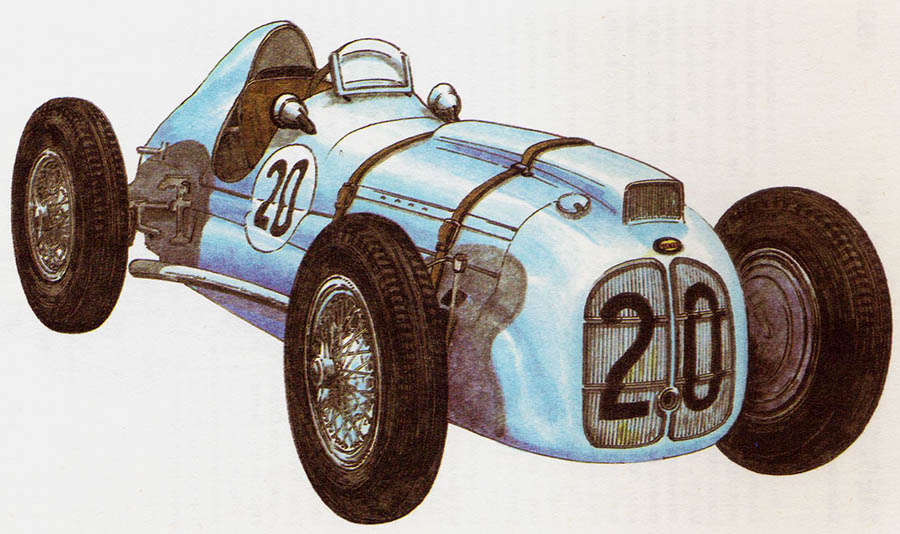DELAHAYE – year 1938
Delahaye Automobiles, Paris, France.
The only racing car without a compressor, which could successfully face the three-liter monoposto supercharged, with high engine power, was Delahaye. This happened in the first two races of the season, although this was partly due to the absence of Alfa Romeo and Auto Union cars.

Delahaye Automobiles, Paris, France.
Delahaye's best driver was Rene Dreyfus, who rides most for Bugatti. This competitor won the French Grand Prix in Pau, overtaking Caracciola on a Mercedes, and in the Cork Grand Prix race in Great Britain he defeated Bugatti and Maserati cars.
Victorious Delahaye, the work of the designer Jean Francois, it was equipped with a twelve-cylinder V-engine with a cylinder diameter 75 mm and piston stroke 85 mm, so that the total capacity was 4490 cm3, according to the rules 4,5 liter formula for engines without a compressor. Despite the lack of a compressor, the engine achieved admirable power 161,9 kW (220 KM) by 5500 RPM. The power was transferred via a dry disc clutch to the four-speed gearbox and the rear axle. The independent suspension of the front wheels uses transverse rocker arms in a trapezoidal arrangement, leaf springs and a transverse arm. The stiff de Dion rear axle had longitudinal guides. In a single-seat body, the driver's seat is located on the side of the longitudinal axis of the vehicle. The car had a resting weight 1170 kg and reached the top speed 225 km/h.
The strong point of Delahaye cars, unable to compete with others in terms of speed, was their reliability, which in racing was often the decisive feature, and low fuel consumption. These cars made up for the losses caused by the low engine power sometimes, which their competitors were wasting on refueling. Delahaye was represented by the team of "Ecurie Bleue" players” under the direction of Lucy O'Reilly-Schella. The successes include winning the Rallye Monte Carlo in 1937 of the year and in the 24 Hours of Le Mans” the following year.